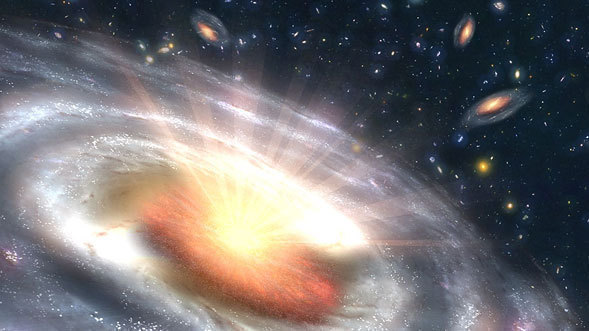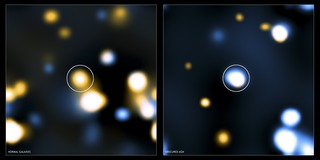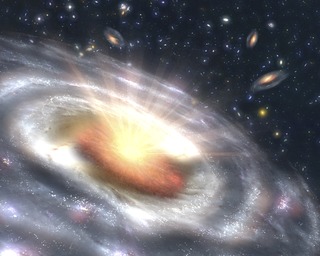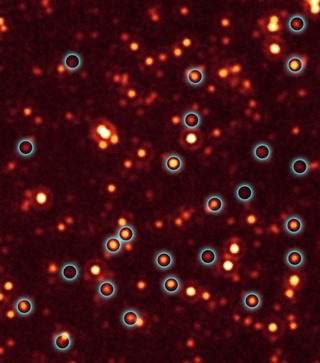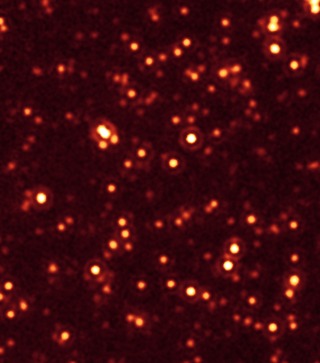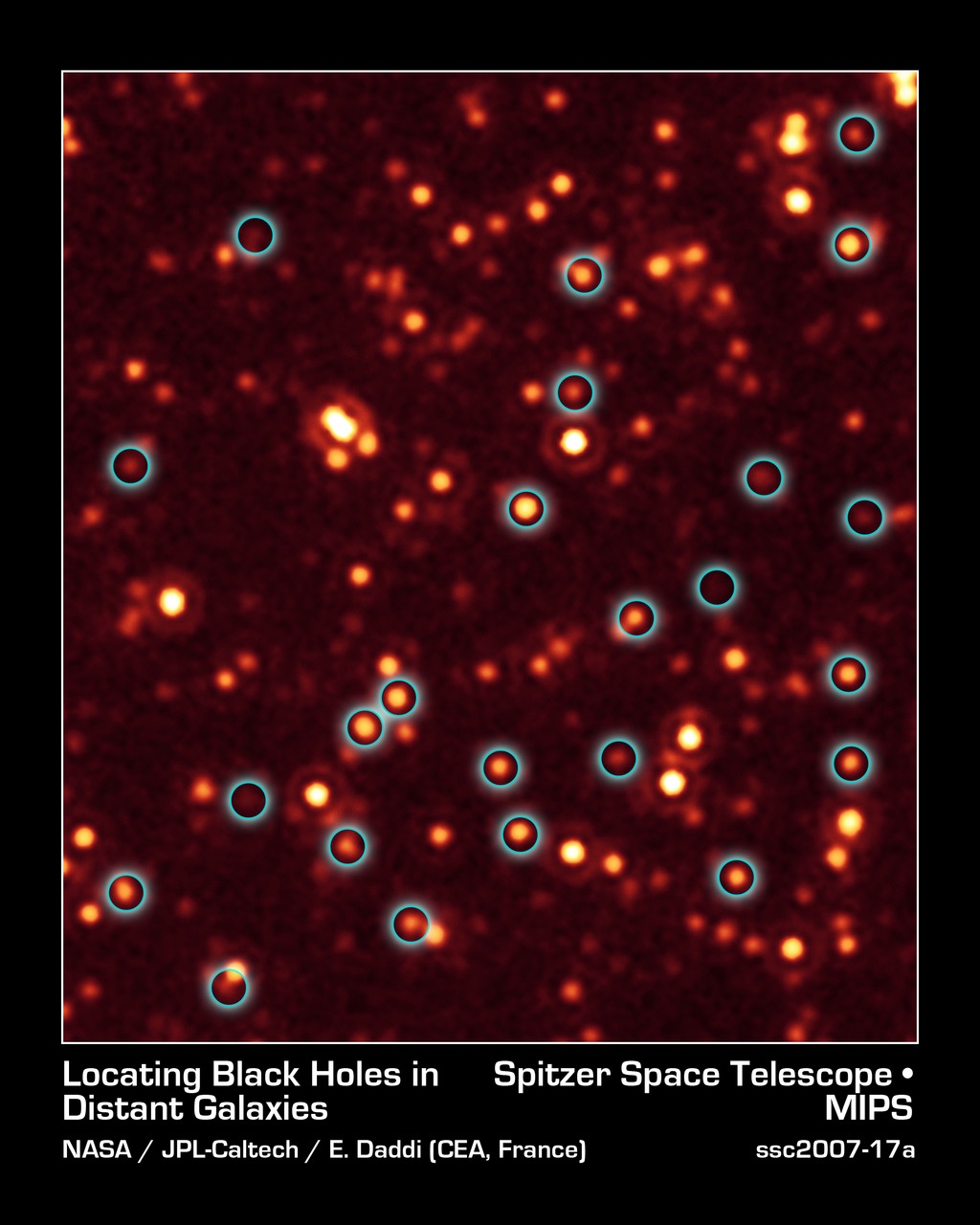
Credit: NASA/JPL-Caltech/E. Daddi (CEA, France)
Observation • October 25th, 2008 • ssc2007-17a
ssc2007-17a
A long-lost population of active supermassive black holes, or quasars, has been uncovered by NASA's Spitzer and Chandra space telescopes. This image, taken with Spitzer's infrared vision, shows a fraction of these black holes, which are located deep in the bellies of distant, massive galaxies (circled in blue).
Spitzer originally scanned the field of galaxies shown in the picture as part of a multiwavelength program called the Great Observatories Origins Deep Survey, or Goods. This picture shows a portion of the Goods field called Goods-South. When astronomers saw the Spitzer data, they were surprised to find that hundreds of the galaxies between 9 and 11 billion light-years away were shining with an unexpected excess of infrared light. They then followed up with X-ray data from Chandra of the same field, and applied a technique called stacking, which adds up the faint light of multiple galaxies. The results revealed that the infrared-bright galaxies are hiding many black holes that had been theorized about before but never seen. This excess infrared light is being produced by the growing black holes.
The other smudges in this picture are distant galaxies, most of which are closer to us than the circled galaxies, causing them to appear brighter.
This image was taken by Spitzer's multiband imaging photometer at a wavelength of 24 microns. It shows the faintest distant objects ever observed with Spitzer at this wavelength.
About the Object
- Name
- GOODS South Field
- Type
- Cosmology > Morphology > Deep Field
- Star > Evolutionary Stage > Black Hole
- Distance
- 9,000,000,000 Light Years
- Redshift
- 3
Color Mapping
| Band | Wavelength | Telescope |
| Infrared | 24.0 µm | Spitzer MIPS |
